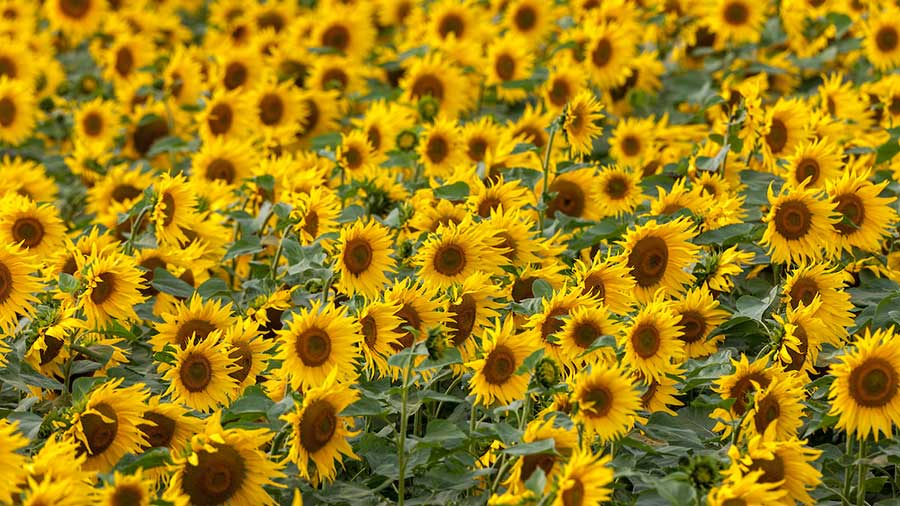Could sunflowers be grown on more UK farms?
 © Tim Scrivener
© Tim Scrivener Farmers looking to diversify their rotation or attract people on-farm to generate income could benefit from growing sunflowers this spring.
Sunflowers provide a bulk ingredient in the bird-seed market and an alternative oilseed crop, and also pave the way for diversified farm businesses.
See also: Round-up of niche crop options for UK growers
Many farmers have benefited from initiatives such as sunflower trails or pick-your-own flowers by encouraging members of the public on-farm.
Some have even gone the extra mile to sell seeds and oil direct through farm shops, at a premium price.
Spring seed available
Seed specialist Angus Fox, at merchant Grainseed in Suffolk, says there is a golden opportunity to produce more sunflowers domestically.
“If you look at the top sunflower producers, Russia produces 16.5m tonnes and Ukraine 10m tonnes, with Europe producing 9.4m tonnes.
“We can produce good yields of good quality sunflower seed for the bird-seed market,” he says.
While sunflowers were traditionally grown south of the Wash to the Bristol Channel, there are now more favourable areas to the North and West where the crop can be successfully grown.
Sunflower yields in Europe average about 2.5t/ha, but this can be as high as 4t/ha. Realistically, UK growers can expects yields in the region of 1.6-3t/ha.
The company says there has been significant interest in grain sunflowers, which is why they have secured more seed for 2023.
Seed is still available – particularly the firm’s best-selling variety Bella, which is a high-yielding early maturing crop.
The variety has a high oil content of 48-50% and matures in 135-140 days. It boasts good standing ability, high dry matter yield and good disease resistance.
Advice on growing sunflowers
Sunflower grower Brian Fletcher – dubbed “the king of sunflower agronomy” – has 30 years’ experience of growing the crop and offers his advice.
Where to grow?
Sunflowers can be grown on any soil type with an optimum pH of 6.5-7.5. They grow well on potash rich clay and clay loam soils which is why potash levels are important.
Optimum drilling date is between the end of April and mid-May, at a depth of 7cm into a warm moist seed-bed, when soil temperatures at 5cm depth are above 7C.
“It is important to get the crop off well and don’t rush it. Sunflowers are drilled at 110,000-120,000 seeds/ha to achieve a target population of 100,000 plants/ha on a 35-45cm row width,” says Mr Fletcher.
Sunflowers should not be grown on a closer than one-in-four year rotation, to prevent disease build-up in the soil.
Inputs
Sunflowers have low-fertiliser requirement, which should be applied to the seed-bed. If the field is sprayed off with glyphosate as a stale seed-bed, then no further weed control should be needed.
Pigeons can be a problem at emergence. Drilling in May to achieve rapid establishment in warm conditions minimises this vulnerable stage.
“Once the crop has two cotyledons, it rarely needs any further protection,“ he says.
“If conditions are mild and wet at harvest, the back of the seed head may be infected with botrytis or sclerotinia.
“By growing an early variety such as Bella, harvest can take place before these diseases are problematic.”
Harvest and marketing
Harvest occurs mid-September to October when seed moisture is 15-20% dry matter.
Prior desiccation is required when seeds are at 30% moisture and the flower rays brush off the head easily.
Seed can be dried on cold air-drying floors down to 15% moisture.
“Many growers sell seed directly to the public via farm shops. There is a ready and plentiful market with strong domestic demand,” he says.

